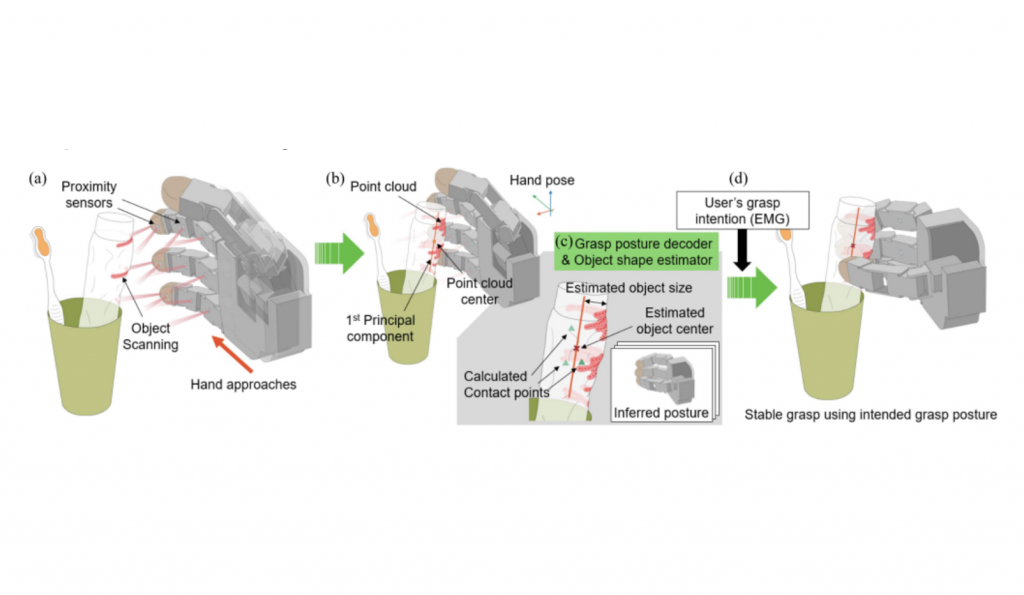-
Research Highlight
Proximity Perception-Based Grasping Intelligence: Toward the Seamless Control of a Dexterous Prosthetic Hand
A novel perception system, the proximity perception-based grasping intelligence (P2GI) system, has been developed to enhance the dexterity of prosthetic hands, closely mimicking human hand functionality. Utilizing embedded proximity sensors and a real-time decision-making algorithm, the P2GI system accurately maps the point cloud of an object and infers the user’s intended grasp posture, achieving a high accuracy of grasp posture classification and a high rate of task success. This advancement promises significant improvements in prosthetic hand control, potentially broadening the application of highly dexterous prosthetic hands in everyday tasks....read more
-
Research Highlight
2.5D Laser-Cutting-Based Customized Fabrication of Long-Term Wearable Textile sEMG Sensor
Prof. Jung Kim’s group has developed a 2.5D laser cutting method to accelerate customized sEMG sensor fabrication from design to production. sEMG sensors measure human muscle activity and are widely used in wearable systems for human-machine interaction. In order to use sEMG sensors for a long time in daily life, it is necessary to develop a sensor that can be customized and worn easily and does not affect the signal due to movement. This customizable textile-based sEMG sensor provides high wearing comfort and improves the sensor signal quality through stable contact....read more

291 Daehak-ro Yuseong-gu Daejeon, 34141, Republic of Korea
Partnered with KAIST Breakthroughs and KAIST Compass


